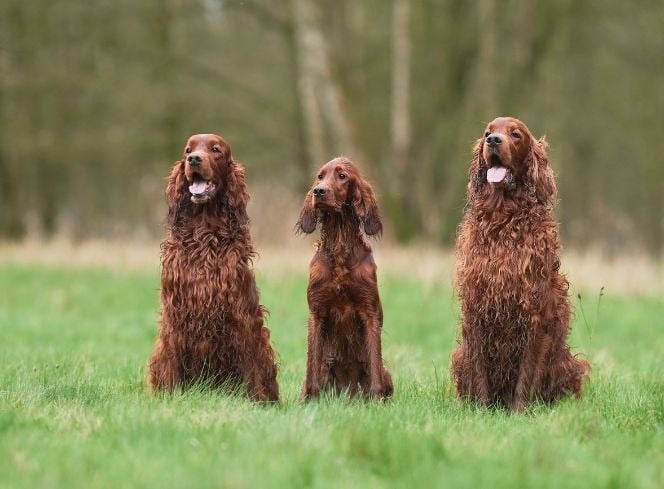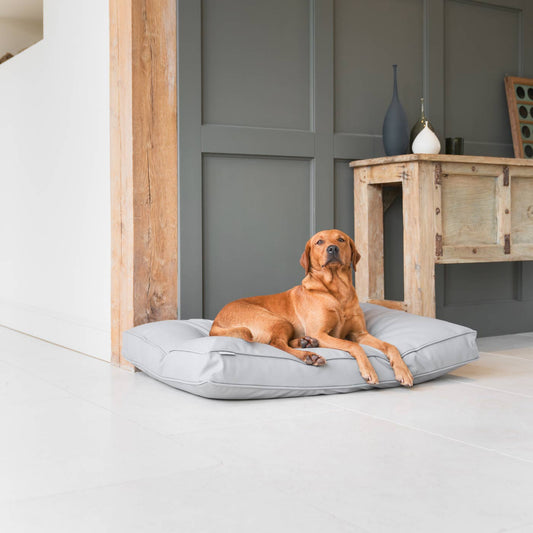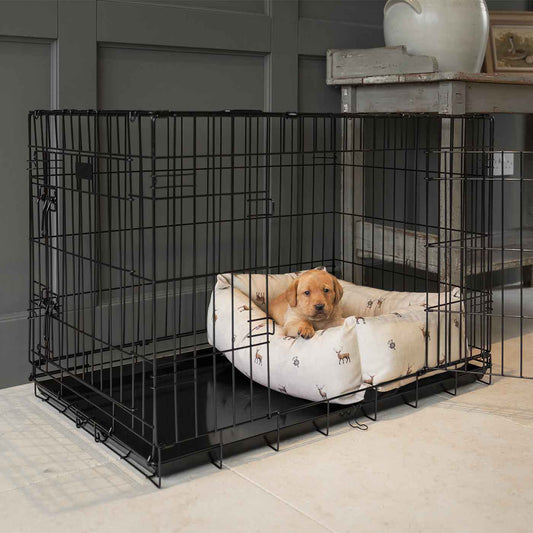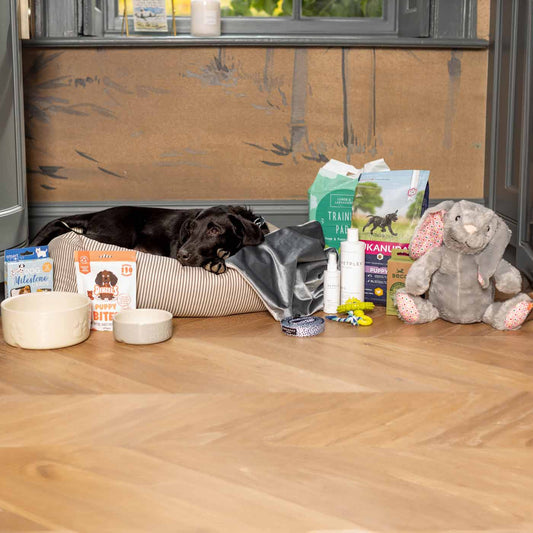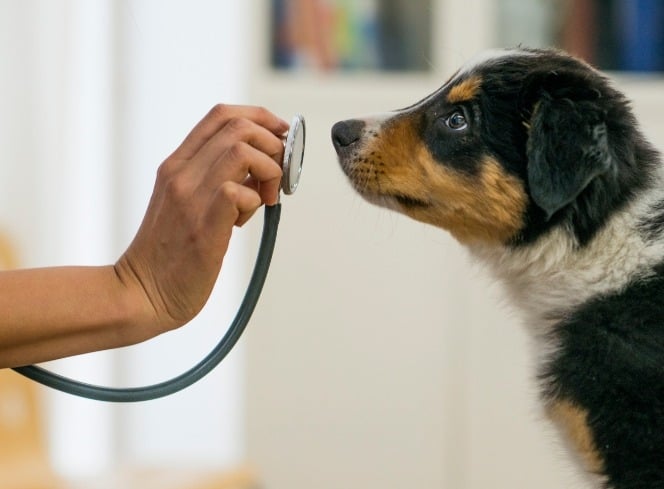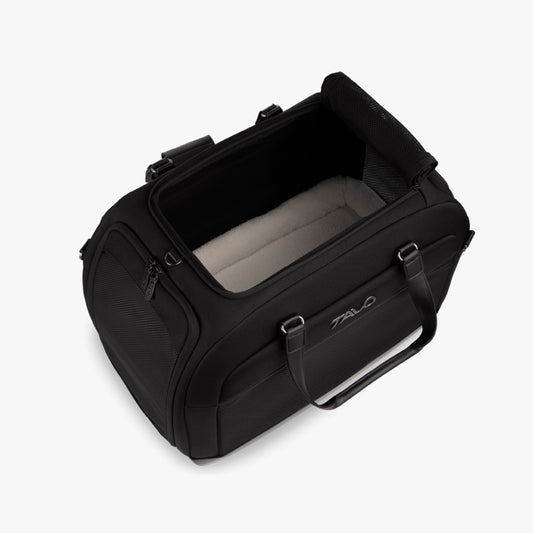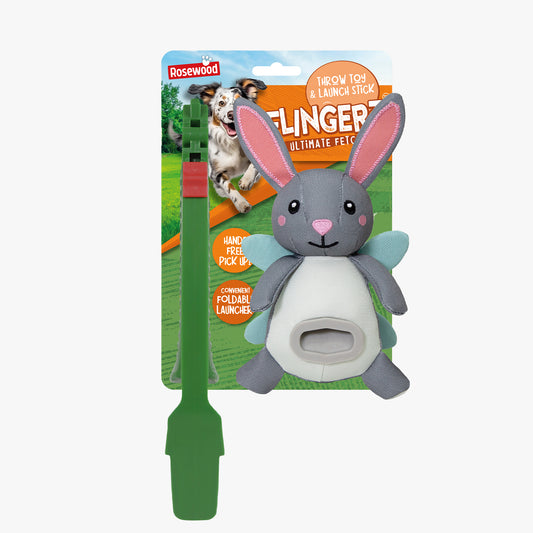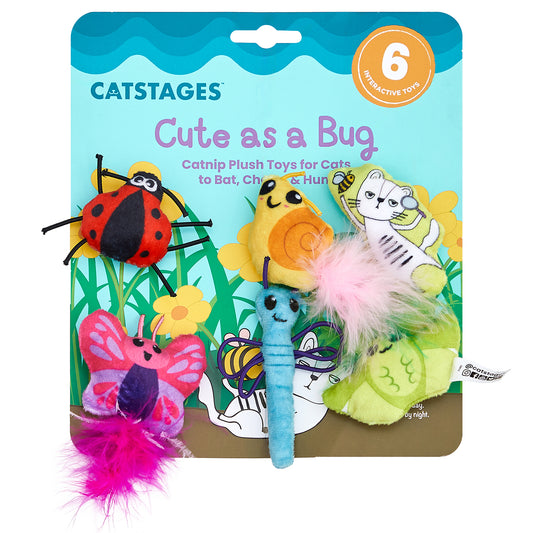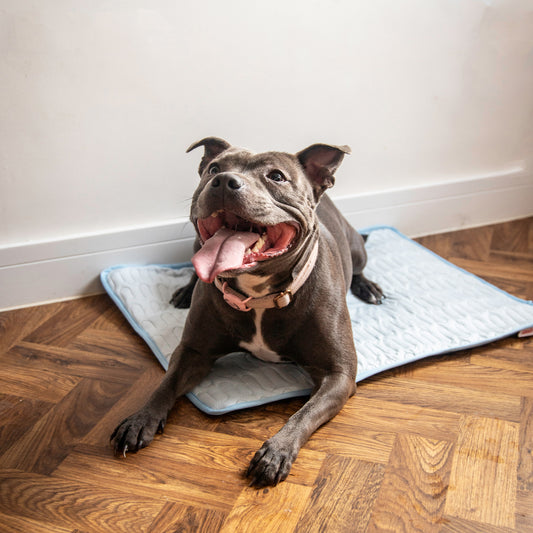If you're considering adding a Red Setter to your family or already have one, congratulations! Red Setters, also known as Irish Setters, are beautiful and energetic dogs known for their stunning red coats and friendly dispositions. In this comprehensive guide, we'll delve into all aspects of Red Setter ownership, from their personality and traits to health concerns, training tips, dietary needs, grooming essentials, and more.
Red Setter Facts and Information
Red Setters originated in Ireland, where they were selectively bred for their hunting abilities and striking appearance. They are descendants of various land spaniels and setters, with the breed's modern characteristics refined over centuries of breeding. Red Setters are known for their elegant and athletic build, with a graceful yet powerful presence. They possess a keen sense of smell and exceptional hunting instincts, making them valuable companions for bird hunters and outdoor enthusiasts. Red Setters are also cherished for their affectionate and friendly nature, forming strong bonds with their families and enjoying companionship and attention.
Red Setter Fact File
| Kennel Club Breed Group | Gundogs |
| Size | Large |
| Daily Exercise | 2+ hours a day |
| Coat Type | Medium length, flat and wavy |
| Coat Colours | Red |
| Lifespan | 10+ years |
Red Setter Personality and Traits
One of the most endearing qualities of Red Setters is their affectionate and outgoing nature. They are known for being friendly, playful, and highly sociable dogs, making them excellent companions for families and individuals alike. Red Setters thrive on human interaction and are generally good with children and other pets when properly socialised. Their energetic disposition means they enjoy plenty of physical and mental stimulation. Red Setters have a keen sense of smell and love to explore, making them excellent candidates for activities like hiking, jogging, and agility training.
Red Setter Health Issues
Like all breeds, Red Setters may be prone to certain health issues, including:
- Hip Dysplasia
- Progressive Retinal Atrophy (PRA)
- Hypothyroidism
- Canine Leukocyte Adhesion Deficiency (CLAD)
Regular veterinary check-ups and a healthy lifestyle can help mitigate the risk of these conditions. Responsible breeding practices can also play a significant role in reducing the incidence of genetic health problems.
Raising a Red Setter
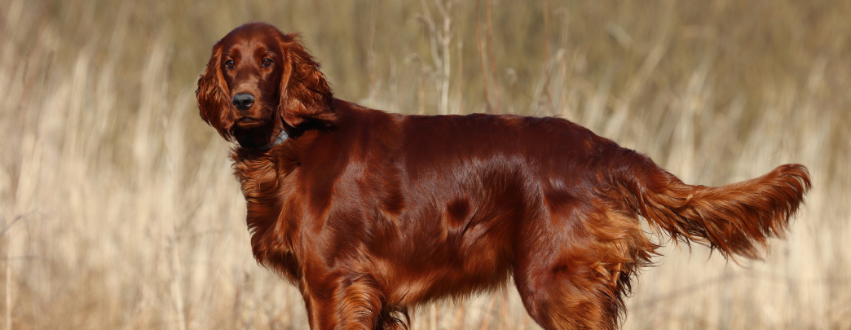
Raising a Red Setter requires patience, consistency, and dedication. Early socialisation and training are crucial to ensuring they develop into well-behaved and balanced adults. Positive reinforcement techniques work best with Red Setters, as they respond well to praise and rewards.
Red Setter Training
Training a Red Setter requires a firm yet gentle approach. These intelligent dogs thrive on mental stimulation and enjoy learning new commands and tricks. Positive reinforcement training, such as treats and praise, is really effective when training your Red Setter.
Red Setter Puppy Training Tips
When training a Red Setter puppy, start with short, frequent sessions to keep their attention and prevent boredom. Use positive reinforcement techniques and be patient as your puppy learns. Consistency is key, so be sure to enforce rules and boundaries consistently.
Crate Training a Red Setter Puppy
Crate training can be a valuable tool for both housebreaking and providing your puppy with a safe space of their own. Choose a crate that is appropriately sized for your Red Setter, with enough room for them to stand up, turn around, and lie down comfortably; we recommend an XXL size in our deluxe dog crates for Red Setters.
For a Red Setter puppy we recommend using one of our Cosy & Calming puppy crate beds, they fill half of the crate so are perfect for crate training and are designed to cocoon your puppy to sleep. If you’re looking to crate train your Red Setter puppy our ‘Complete Crate Training Guide’ has been written by our Pet Experts and contains all of their tips, tricks and advice on how to successfully crate train your puppy - read it here.
Best Bed for a Red Setter
When selecting a bed for your Red Setter, opt for a durable and comfortable option that provides adequate support for their joints. Look for beds with orthopaedic foam or memory foam to cushion pressure points and promote restful sleep, our Twill orthopaedic mattresses are a perfect choice for a supportive bed. Alternatively our Rhino tough range is a great choice if your Red Setter is a chewer, they are made from a durable faux leather and are chew and scratch resistant.
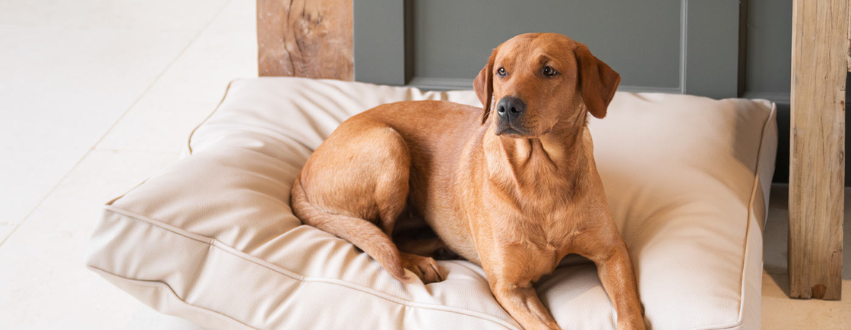
How Much Exercise Does a Red Setter Need?
Red Setters are a high-energy breed that requires plenty of exercise to stay happy and healthy. Aim for at least an hour, if not 2, of vigorous activity each day, which can include walks, runs, playtime, and interactive toys to keep them mentally stimulated.
Best Walking Accessories for a Red Setter
Invest in high-quality walking accessories such as a sturdy lead, harness, and collar. For Red Setters we’d recommend picking a durable material such as leather for their collar and lead, our padded leather collars and leads are a great choice as they are handcrafted using the finest Italian leather so are great quality.
Best Food For Red Setters
A balanced diet is essential for maintaining your Red Setter's overall health and well-being. Choose a premium-quality dog food formulated for large dogs that is rich in high-quality protein, as well as essential vitamins and minerals. For both adults and puppies we recommend looking at the following brands: Carnilove, Orijen and Acana, all three brands are really high quality with good ingredients, and they all have both puppy ands adult formulations specifically designed for large dogs.
Best Toys for Red Setters
Red Setters are active and playful dogs that enjoy a variety of toys to keep them entertained. Choose durable toys that are suitable for chewing, fetching, and interactive play. Puzzle toys and treat-dispensing toys are excellent options to challenge their problem-solving skills and provide mental stimulation. To appeal to their hunting nature we recommend looking at the Nerf range of interactive dog toys, from the Trackshot launcher duck to the tennis ball launchers, the Nerf toys will appeal to their retrieving instincts.
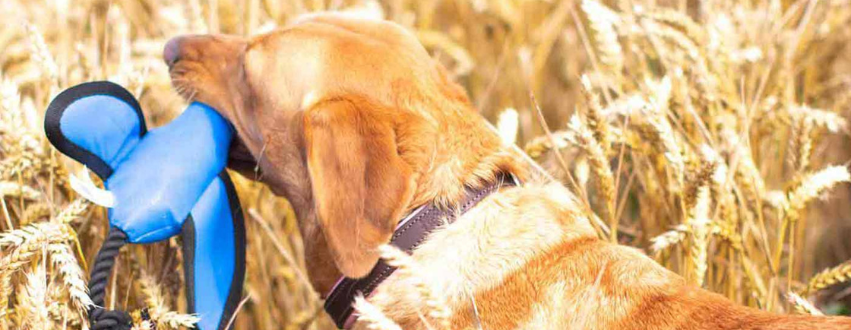
Red Setter Grooming Tips and Best Grooming Products
Regular grooming is essential for maintaining your Red Setter's coat and skin health. Brush their coat at least once a week to remove loose hair and prevent matting. Use a slicker brush or grooming mitt to gently remove tangles and distribute natural oils throughout the coat.
Invest in high-quality grooming products such as shampoo, conditioner, and grooming tools designed specifically for long-haired breeds like Red Setters. The Bugalugs all in 1 shed control shampoo is perfect for Reed Setters, the formula cleans, soothes and nourishes, reducing shedding with essential oils such as aloe vera, wheat proteins and oat kernel oil.
Be sure to check their ears regularly for signs of infection and trim their nails as needed to prevent overgrowth and discomfort.
In conclusion, Red Setters are wonderful companions known for their beauty, intelligence, and loving nature. By providing proper care, training, and attention to their needs, you can enjoy a fulfilling and rewarding relationship with your Red Setter for years to come.
Remember, each Red Setter is unique, so take the time to understand your dog's individual personality and preferences. With love, patience, and commitment, you'll be rewarded with a loyal and devoted companion for life. To shop the best picks for your Red Setters check out our Red Setter collection - we’ve hand selected the best products specifically for them.






















































